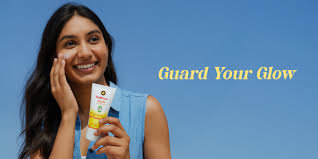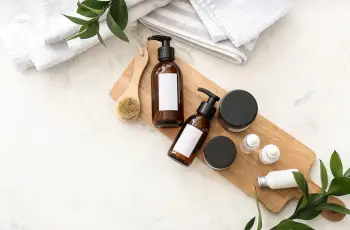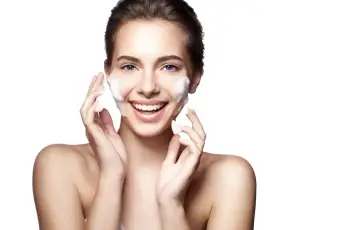
How Does Sun Protection Factor (SPF) Work?
As the warm summer months approach, it becomes increasingly important to protect our skin from the harmful effects of ultraviolet (UV) radiation by using sunscreen that contains a reliable Sun Protection Factor, commonly known as SPF.
While most people understand that sunscreen helps prevent sunburns and skin damage, many are unclear on exactly how SPF works, why it matters, and how to use it properly for optimal skin protection and health.
In this guide, we’ll explain everything you need to know about SPF—from how it’s calculated to how it should be applied—so you can make smart, informed decisions about sun care all year round.
Understanding UV Radiation: The Basics Before SPF
Before diving into the mechanics of SPF, it’s helpful to understand what exactly we’re protecting our skin from: specifically, the two main types of UV radiation, UVA and UVB rays, each with distinct effects on the skin.
UV radiation is a form of energy emitted by the sun, and when it reaches our skin, it can cause both immediate damage (like burns) and long-term harm, including premature aging and increased cancer risk.
UVB rays are primarily responsible for sunburn and direct damage to the outer layer of the skin, while UVA rays penetrate deeper and are linked to premature skin aging and long-term cellular damage.
UVB Rays: The Primary Cause of Sunburn
UVB rays have shorter wavelengths but are more intense, affecting the skin’s surface layers and causing the classic signs of sunburn—redness, heat, and sometimes painful blistering.
These rays are strongest during peak sunlight hours, usually between 10 a.m. and 4 p.m., and are a key contributor to skin cancers because they damage the DNA in the skin’s outermost cells.
A simple way to remember their effect is this: UVB equals Burn, as these rays are the main reason for the stinging sensation and redness after spending too much time in the sun.
UVA Rays: The Silent Skin Ager
Unlike UVB, UVA rays penetrate more deeply into the dermis—the inner layer of the skin—breaking down collagen and elastin, which leads to wrinkles, fine lines, and sagging skin over time.
UVA rays are present throughout the day and year, regardless of the weather, and can even pass through windows, meaning indoor exposure is still a concern for those who sit near natural light.
The damage caused by UVA rays may not be immediately noticeable, but it accumulates over time and is a major factor in premature skin aging and even certain types of skin cancer.
Why SPF Is Important Every Single Day
Because UVA rays are consistent year-round and can penetrate through clouds, glass, and clothing, dermatologists strongly recommend wearing sunscreen daily—even on rainy, cloudy, or winter days.
Relying solely on visible sunshine to determine when to use SPF is a common mistake, as UV damage can occur regardless of temperature or direct sunlight, especially with prolonged exposure.
UVB rays fluctuate more in intensity and are strongest in summer and during peak sun hours, but UVA rays remain steady, making daily SPF use essential for comprehensive skin protection.
What Exactly Is SPF and How Does It Protect You?
SPF, or Sun Protection Factor, is a numerical rating that indicates how long a sunscreen can protect your skin from UVB rays compared to having no protection at all under the same sun exposure.
If you typically burn after 10 minutes of sun exposure without sunscreen, applying a sunscreen with SPF 30 means you can theoretically stay in the sun for 300 minutes before burning—assuming proper application.
It’s important to note that SPF primarily measures protection against UVB rays, not UVA rays, so look for “broad-spectrum” products that cover both forms of UV radiation for complete protection.
How SPF Ratings Are Calculated and Interpreted
The SPF number is a ratio comparing the amount of UVB radiation required to cause redness on protected skin versus unprotected skin under identical conditions of sun exposure.
An SPF 15 sunscreen filters out approximately 93% of UVB rays, SPF 30 blocks around 97%, and SPF 50 offers about 98% protection—but no sunscreen blocks 100% of UV radiation.
This means that while higher SPF numbers offer marginally better protection, the difference between SPF 30 and SPF 50 is relatively small, and reapplication matters more than choosing the highest number.
How Long Does SPF Protection Last?
Even if a sunscreen offers high SPF, its effectiveness doesn’t last all day—most products need to be reapplied every two hours, especially if you are swimming, sweating, or toweling off.
A common misconception is that applying sunscreen once in the morning provides all-day protection, but environmental factors like water, humidity, and friction significantly reduce its effectiveness over time.
To maintain protection, reapply sunscreen generously at least every two hours, and even more frequently if engaging in physical activity, swimming, or if the sunscreen is not labeled as water-resistant.
Choosing the Right SPF for Your Skin and Lifestyle
The best SPF for you depends on your skin type, how easily you burn, and the amount of time you plan to spend outdoors; lighter skin tones generally need higher SPF ratings for adequate protection.
For fair or sensitive skin, dermatologists often recommend SPF 50 or higher, while those with medium to darker skin tones may be adequately protected with SPF 30—but everyone needs sunscreen.
Additionally, people with conditions like rosacea, eczema, or a history of skin cancer should be especially diligent in using high-SPF, broad-spectrum sunscreens on a daily basis.
Proper Application of Sunscreen for Maximum Benefit
Applying sunscreen correctly is just as important as choosing the right SPF level, so be sure to use enough product—most adults need about one ounce (a shot glass full) to cover their entire body.
Don’t forget commonly missed areas like the ears, the back of the neck, the tops of the feet, and even the scalp if you have thinning hair or wear your hair parted in a certain way.
Allow sunscreen to fully absorb into the skin—apply it at least 15 minutes before sun exposure—and reapply regularly to maintain consistent coverage throughout the day.
Reapplication: Why It Can’t Be Skipped
The effectiveness of sunscreen diminishes quickly after sun exposure, sweating, swimming, or rubbing the skin with a towel, which is why reapplying every two hours is essential for continued protection.
Even water-resistant sunscreens need to be reapplied regularly; check the product label to see if it offers 40 or 80 minutes of water resistance, and reapply immediately after swimming or heavy sweating.
Don’t rely on makeup or moisturizer with SPF as your sole protection—these products are often applied too thinly to offer full coverage, so always use a dedicated sunscreen as your base layer.
Understanding Broad-Spectrum Protection
A sunscreen labeled “broad-spectrum” provides protection against both UVA and UVB rays, making it the most effective choice for preventing both sunburn and long-term skin aging or cellular damage.
Look for ingredients like zinc oxide and titanium dioxide in mineral sunscreens, which sit on top of the skin and reflect UV rays, offering immediate protection and being suitable for sensitive skin types.
Chemical sunscreens, on the other hand, absorb UV rays and convert them into heat; these often contain ingredients like avobenzone or oxybenzone and may offer a lighter feel on the skin.
What to Consider When Buying Sunscreen
Your perfect sunscreen should suit your skin type, activity level, and daily routine—whether you need something water-resistant, fragrance-free, or non-comedogenic, there’s an option for everyone.
Mineral sunscreens are often recommended for those with sensitive or acne-prone skin, while active individuals may prefer lightweight, sweat-proof formulas designed for outdoor sports or swimming.
For daily use, SPF-infused moisturizers and tinted sunscreens offer dual benefits, but remember to check for broad-spectrum coverage and adequate SPF level to ensure true protection.
Final Thoughts: SPF as Your Daily Skin Defense
Incorporating SPF into your daily routine isn’t just for beach days—it’s a simple, effective way to protect your skin from immediate sunburn and long-term risks like premature aging and skin cancer.
Think of sunscreen as your skin’s best friend, shielding you from invisible yet harmful rays that can cause lasting damage over time, even when skies are overcast or you’re sitting indoors by a window.
By understanding how SPF works, selecting the right formula for your needs, and committing to proper application and reapplication, you’ll keep your skin healthy, resilient, and youthful for years to come.


